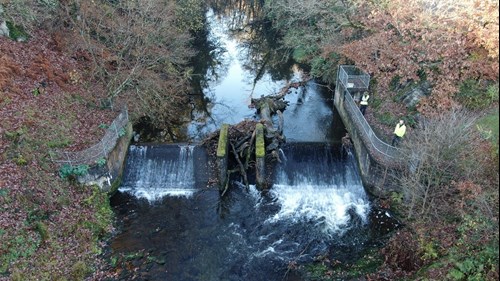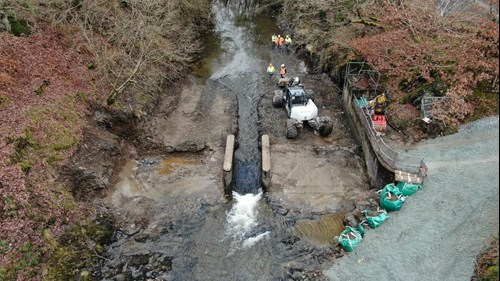Restoring River Clywedog: Removing Barriers to Fish Migration

In the heart of mid Wales, on this World Rivers Day (September 24), we have a conservation success story to celebrate along the banks of the River Clywedog, a tributary of the River Severn.
Thanks to the dedication and collaboration of multiple stakeholders, a redundant barrier to fish migration has been removed, ushering in a new era for this watery environment.
In this blog, Jason Jones, Senior Fisheries Officer in Mid Wales, takes us through the details of this inspiring project, its challenges, and the significant benefits it brings to both the environment and the community.
A Weir Tale Unravelled
Hidden away along the course of the River Clywedog lay Cribynau weir, a concrete relic from the 1950s. Though it had long outlived its intended purpose related to the Llyn Clywedog reservoir, this structure was a significant challenge to the river's health. It acted as a barrier to fish migration, disrupted sediment flow, and impacted habitat quality. The consequences were evident, with fish populations struggling, particularly the trout.
The removal of Cribynau weir was part of NRW's Salmon for Tomorrow 2 Programme. This ambitious initiative aims to improve fish passage and habitat quality in the River Clywedog.
The project faced significant challenges due to timing and water flow. Fluctuating water levels throughout the year required precise planning. The team worked in winter when water levels were expected to be lower, but this still provided only limited windows of opportunity. To access and remove the weir, we used a specialised piece of equipment known as a spider excavator.

Benefits of Removing the Weir
The removal of Cribynau weir brought a multitude of benefits:
- Fish Migration Restored: With the barrier gone, fish now have unhindered access to around 4 kilometers of suitable spawning and juvenile salmonid habitat. This includes both upstream and downstream migration routes.
- Improved In-River Habitat: The unnatural impounded section of the river above the weir has been replaced with more natural habitat types, promoting native ecology and creating better conditions for aquatic life.
- Sediment Movement: Removing the weir allows sediment to move freely downstream. This gravel is essential for the spawning and juvenile stages of salmon and trout.
- Biodiversity Enhancement: A dead tree that had been caught on the weir was carefully removed and transported to an NRW woodland estate, where it now contributes to biodiversity habitat.
Additionally, all concrete from the weir and stones from the gabion baskets were reused, reducing the project's carbon footprint and environmental impact.
This work was conducted under the fisheries aspect of the Water Capital Programme, funded by NaCE (Natural Capital and Ecosystem Resilience), which, in turn, is funded by the Welsh Government.

A Broader Perspective on Our work
As we mark World Rivers Day, we have to note that the scale and rate of biodiversity loss across the nation is accelerating, impacting on species who depend on our natural resources.
Our rivers and the species they support are under increasing pressure from climate change and pollution. As a result iconic species like salmon are unfortunately becoming rarer, and we need to take urgent action to support them.
One of the most impactful steps we can do is remove any artificial barriers that stop them from making their way up, and downstream. Removing weirs gives salmon more access to the cool, clean water and good quality habitat they need to survive.
The removal of Cribynau weir is a reminder that even the smallest removal can make a world of difference to the delicate balance of our ecosystems.
